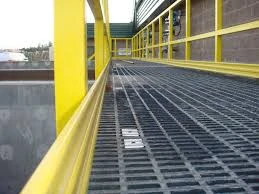
-
 Afrikaans
Afrikaans -
 Albanian
Albanian -
 Amharic
Amharic -
 Arabic
Arabic -
 Armenian
Armenian -
 Azerbaijani
Azerbaijani -
 Basque
Basque -
 Belarusian
Belarusian -
 Bengali
Bengali -
 Bosnian
Bosnian -
 Bulgarian
Bulgarian -
 Catalan
Catalan -
 Cebuano
Cebuano -
 China
China -
 China (Taiwan)
China (Taiwan) -
 Corsican
Corsican -
 Croatian
Croatian -
 Czech
Czech -
 Danish
Danish -
 Dutch
Dutch -
 English
English -
 Esperanto
Esperanto -
 Estonian
Estonian -
 Finnish
Finnish -
 French
French -
 Frisian
Frisian -
 Galician
Galician -
 Georgian
Georgian -
 German
German -
 Greek
Greek -
 Gujarati
Gujarati -
 Haitian Creole
Haitian Creole -
 hausa
hausa -
 hawaiian
hawaiian -
 Hebrew
Hebrew -
 Hindi
Hindi -
 Miao
Miao -
 Hungarian
Hungarian -
 Icelandic
Icelandic -
 igbo
igbo -
 Indonesian
Indonesian -
 irish
irish -
 Italian
Italian -
 Japanese
Japanese -
 Javanese
Javanese -
 Kannada
Kannada -
 kazakh
kazakh -
 Khmer
Khmer -
 Rwandese
Rwandese -
 Korean
Korean -
 Kurdish
Kurdish -
 Kyrgyz
Kyrgyz -
 Lao
Lao -
 Latin
Latin -
 Latvian
Latvian -
 Lithuanian
Lithuanian -
 Luxembourgish
Luxembourgish -
 Macedonian
Macedonian -
 Malgashi
Malgashi -
 Malay
Malay -
 Malayalam
Malayalam -
 Maltese
Maltese -
 Maori
Maori -
 Marathi
Marathi -
 Mongolian
Mongolian -
 Myanmar
Myanmar -
 Nepali
Nepali -
 Norwegian
Norwegian -
 Norwegian
Norwegian -
 Occitan
Occitan -
 Pashto
Pashto -
 Persian
Persian -
 Polish
Polish -
 Portuguese
Portuguese -
 Punjabi
Punjabi -
 Romanian
Romanian -
 Russian
Russian -
 Samoan
Samoan -
 Scottish Gaelic
Scottish Gaelic -
 Serbian
Serbian -
 Sesotho
Sesotho -
 Shona
Shona -
 Sindhi
Sindhi -
 Sinhala
Sinhala -
 Slovak
Slovak -
 Slovenian
Slovenian -
 Somali
Somali -
 Spanish
Spanish -
 Sundanese
Sundanese -
 Swahili
Swahili -
 Swedish
Swedish -
 Tagalog
Tagalog -
 Tajik
Tajik -
 Tamil
Tamil -
 Tatar
Tatar -
 Telugu
Telugu -
 Thai
Thai -
 Turkish
Turkish -
 Turkmen
Turkmen -
 Ukrainian
Ukrainian -
 Urdu
Urdu -
 Uighur
Uighur -
 Uzbek
Uzbek -
 Vietnamese
Vietnamese -
 Welsh
Welsh -
 Bantu
Bantu -
 Yiddish
Yiddish -
 Yoruba
Yoruba -
 Zulu
Zulu
High-Temperature Fiberglass Products | Durable and Reliable Solutions
Fiberglass Products for High Temperature Applications
Fiberglass products have gained significant popularity in various industries due to their excellent thermal resistance, lightweight nature, and versatility. In high-temperature applications, fiberglass serves as a reliable solution, providing both structural integrity and protection against extreme heat. This article explores the characteristics, applications, and benefits of fiberglass products designed specifically for high-temperature environments.
Characteristics of High-Temperature Fiberglass
Fiberglass is composed of fine glass fibers woven into a mat or fabric, which is then saturated with resin to form a composite material. The unique properties of fiberglass make it an ideal candidate for high-temperature applications
1. Thermal Resistance Fiberglass can withstand temperatures ranging from 400°F (204°C) to over 1200°F (649°C), depending on the resin used. This high thermal tolerance allows fiberglass materials to maintain their strength and form even in extreme conditions.
2. Low Thermal Conductivity Fiberglass exhibits low thermal conductivity, which means it acts as an effective insulator. This property allows it to protect sensitive components from heat damage and maintain temperature stability.
3. Corrosion Resistance High-temperature fiberglass products are often designed to resist corrosive substances. This characteristic is particularly important in applications where exposure to chemicals and harsh environments can lead to material degradation.
Applications of High-Temperature Fiberglass
Due to its remarkable properties, fiberglass is used in a variety of high-temperature applications across multiple sectors
1. Aerospace Industry In the aerospace sector, fiberglass components are used in aircraft interiors, engine components, and thermal protection systems. The lightweight nature of fiberglass contributes to overall fuel efficiency while providing safety and comfort.
fiberglass products for high temperature

2. Automotive Industry Many automotive manufacturers utilize high-temperature fiberglass materials for insulation, heat shields, and body panels. These materials help reduce weight while enhancing thermal management in high-performance vehicles.
3. Industrial Applications Fiberglass is commonly found in industrial settings, particularly in manufacturing and processing plants. It is used for insulation in pipes, valves, and boilers, effectively preventing heat loss and protecting equipment.
4. Marine Industry The marine sector also benefits from high-temperature fiberglass products, which are used in boat hulls, insulation, and engine compartments. These materials provide durability and resistance to the corrosive marine environment.
Benefits of Using High-Temperature Fiberglass
The advantages of utilizing fiberglass products in high-temperature applications extend beyond their physical properties
1. Cost-Effectiveness Although the initial investment in fiberglass may be higher than some traditional materials, its long lifespan and low maintenance requirements can lead to significant cost savings over time.
2. Customization High-temperature fiberglass products can be tailored to meet specific requirements, including shape, size, and resin type, making them suitable for a wide range of applications.
3. Environmental Impact Fiberglass is a recyclable material, making it an environmentally friendly choice for industries looking to reduce their carbon footprint.
Conclusion
In summary, fiberglass products tailored for high-temperature applications offer exceptional thermal resistance, durability, and versatility. Their widespread use in various industries highlights their importance in meeting the demands of modern engineering and manufacturing. As technology advances, the development of even more innovative fiberglass solutions for high-temperature environments is likely to continue, solidifying fiberglass's role as a critical material in demanding applications.









